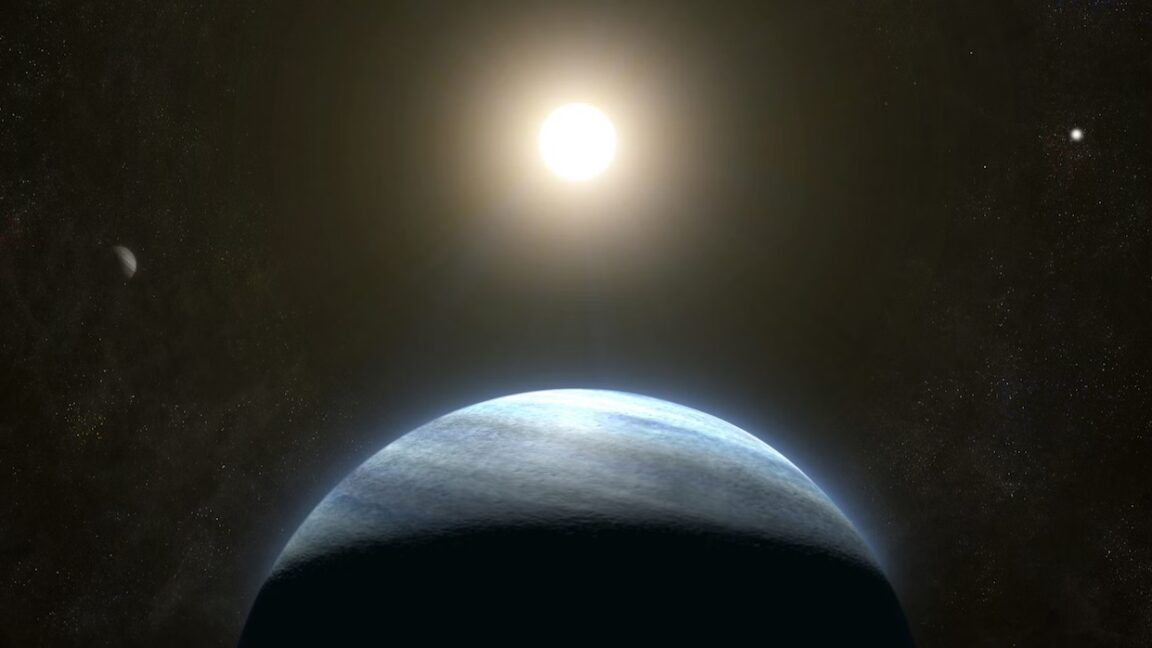Hi 
An interesting post!
So...if deep craters on planets in Elite (just for discussion) could harbour the beginnings of some form of new life (or new gameplay) other than what's available in the game now, I'm initially thinking of the more bio plant like stuff here, but then this could also lead on to include animalia etc...Are you suggesting that on some planets these 'pockets' of life restricted to deep craters would be a starting point for Frontier to introduce some more content along those lines, or are we in this sense restricting these pockets of life to mainly include present earth type flora & fauna, I include your 'normal' human lifeforms as well here.
The sticking point in all this though is, is it easier to expand the game this way, and do we at the same time ignore the other obvious question of why isn't the present 'habitable worlds' for example Earth and other terrestrial worlds be open to more on foot gameplay and other obvious (or expected) content, when deep craters and canyons are habitable.
The other way of looking at it is planets like Mars could be a testing ground for at least some form of planet based 'terraforming' in the game if deep craters and canyons were taken into consideration (or that topography created there for that purpose)?
I get the feeling though that introducing new life and game content, including more detailed Sol like system environments we can land on and interact with is an all or nothing scenario for Frontier, you could start it off in the Sol system though as I've suggested with Mars, that would be a fairly logical step I suppose. ...but I'm going off topic here so....
...but I'm going off topic here so....
If I may ask...What do you think these deep craters (and canyons) could be used for (or contain) in the form of new gameplay?...we could all have entirely different viewpoints and ideas on this topic!
Another question...would these craters be created by a more crafted approach, that might lead to a more singular detailed feature, or would they be created with more like a procedural generation programming method?
Jack
It's not uncomon for tenuous-atmospheric worlds to hold deep craters. Very deep craters. I've surveyed several that go down 8-10km below the planet's surface, with a couple even further.
But, what do the numbers say? Let's take Swoilz AC-G b3-8 2 as an example. Its major dayside crater (located at 13 46 latitude/longitude) goes down to 8.5km... which, assuming I've done the numbers right, gives it a pressure of 20.7% pure oxygen. That's about equivalent to an actual Earth-Like's oxygen content, and it's got a quite habitable regional temp of 10-15C!
An interesting post!
So...if deep craters on planets in Elite (just for discussion) could harbour the beginnings of some form of new life (or new gameplay) other than what's available in the game now, I'm initially thinking of the more bio plant like stuff here, but then this could also lead on to include animalia etc...Are you suggesting that on some planets these 'pockets' of life restricted to deep craters would be a starting point for Frontier to introduce some more content along those lines, or are we in this sense restricting these pockets of life to mainly include present earth type flora & fauna, I include your 'normal' human lifeforms as well here.
The sticking point in all this though is, is it easier to expand the game this way, and do we at the same time ignore the other obvious question of why isn't the present 'habitable worlds' for example Earth and other terrestrial worlds be open to more on foot gameplay and other obvious (or expected) content, when deep craters and canyons are habitable.
The other way of looking at it is planets like Mars could be a testing ground for at least some form of planet based 'terraforming' in the game if deep craters and canyons were taken into consideration (or that topography created there for that purpose)?
I get the feeling though that introducing new life and game content, including more detailed Sol like system environments we can land on and interact with is an all or nothing scenario for Frontier, you could start it off in the Sol system though as I've suggested with Mars, that would be a fairly logical step I suppose.
If I may ask...What do you think these deep craters (and canyons) could be used for (or contain) in the form of new gameplay?...we could all have entirely different viewpoints and ideas on this topic!
Another question...would these craters be created by a more crafted approach, that might lead to a more singular detailed feature, or would they be created with more like a procedural generation programming method?
Jack



